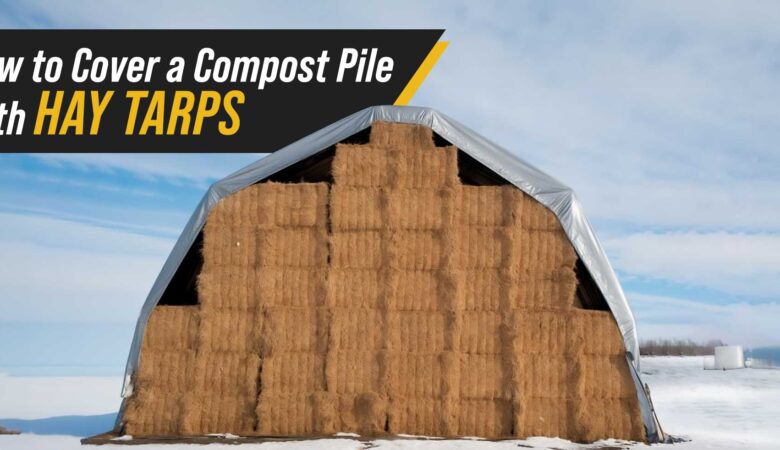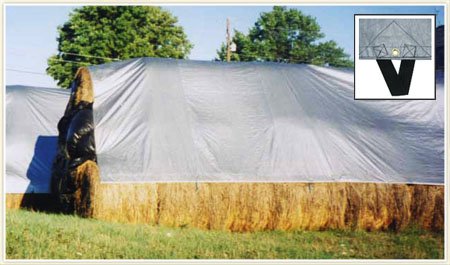
Well-maintained hay is essential to the daily operations and success of the agriculture industry, as it is crucial for the health and development of their livestock. To keep hay at its highest possible quality, it must be stored safely using hay tarps or shelters. In this blog, learn more about the importance of proper hay storage, how hay quality can be affected, and recommended storage practices.
Why is Efficient Hay Storage Important?
Storing your hay incorrectly can cause lasting damage to its quality, which can harm your livestock and subsequently your farming processes and income. Below is a list of ways that improper storage can negatively affect the well-being of your hay:
- Loss of Nutritional Value
- Mold and Fungal Growth
- Increased Fire Risk
- Issues Feeding Livestock
Using hay bale tarps and other recommended storage methods is an effective way to maintain proper hay nutrition, reduce waste, and guarantee a clean and safe diet for your livestock.
How Weather Conditions Can Damage Your Hay
Weather conditions can have a significant impact on the quality of your hay if reliable hay tarpaulins or a storage shelter do not cover it.
- Rain: Not only does rain strip hay of many of its nutrients and minerals, but moisture also greatly contributes to the growth of mold and fungi.
- Sunlight: Prolonged exposure to direct sunlight can cause hay to become brittle and lose the proteins and carbohydrates that make it nutritious for animals.
- Snow: Similar to rain, the moisture from the snow and cold winter weather can cause hay bales to rot quickly, especially those on the bottom of the stacks.
The Best Ways to Store Hay

There are several ways to effectively store your hay and make sure it’s always in top condition for feeding your livestock. Whether you use hay tarps outside or stack them inside, here are some of Mytee’s best tips for appropriate hay storage.
1. Storing Hay Outside
If you choose to store your hay outside, it should always be covered with hay tarps that are tied down at various points for secure storage.
When choosing the best hay storage tarps for your operations, it’s important to find tarps crafted from waterproof and UV-resistant materials to protect your hay from extreme weather conditions. Further, to help you choose the correct size tarp for your hay, check out Mytee’s selection guide here.
Another tip for outdoor hay storage is to place the hay on raised platforms or pallets to prevent contact with ground moisture that causes mold and deterioration.
2. Storing Hay Inside
There are a few different ways you can store your hay inside, including inside a barn, shelter, or tent. Keeping your hay inside a dry, covered environment can prevent the loss of its nutritional value.
Always consider the importance of airflow when organizing your hay inside a barn. You should avoid placing it directly on the ground and leave small gaps between bales so air can circulate through.
Hay shelters or tents are an alternative to barns. They are portable, semi-covered structures that protect your hay from damage, and should be used in the same way as traditional barns.
Upgrade Your Hay Storage with Mytee Products
For farmers and agriculture professionals who rely on high-quality hay to keep operations running smoothly, proper storage is of the utmost importance. Without it, your hay might be at risk for premature rotting and loss of value.
No matter if you choose to keep your hay inside or outside, hay tarps, barns, and shelters are all effective when used correctly. To upgrade your hay storage solutions today, check out all the farming supplies we can offer you.









